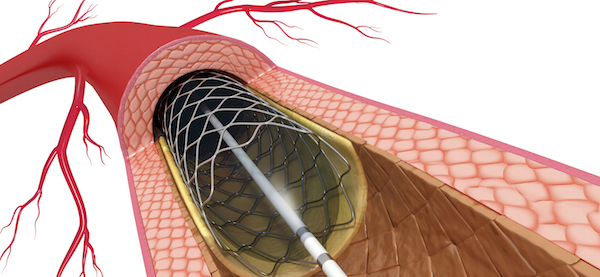Project: Visual Analytics for Percutaneous Coronary Interventions
Description

Master project with Kirsten Maas.
The topic of my PhD is Visual Analytics for Percutaneous Coronary Interventions. I collaborate with Philips, Catharina Ziekenhuis Eindhoven and the Cardiovascular Biomechanics group of the Biomedical Engineering department.
In short: I am interested in NeRF reconstruction methods and Visual Analytics / visualization in the context of PCI. If any of this sounds interesting to you for your master project, feel free to contact me.
Coronary artery disease is caused by stenosis, also called plaque buildup, in the coronary arteries. The coronary arteries are the blood vessels that supply oxygenated blood to the heart. Percutaneous Coronary Interventions (PCI) are performed to open up these clogged arteries by deployments of stents. An effective PCI procedure requires an accurate characterization of the degree of stenosis, as this determines the choice for the diameter and length of the stent. Inadequate sizing or deployment of the stents is prone to lead to recurrent symptoms and complications of PCI.
The coronary artery tree is generally imaged through coronary angiograms, 2D X-ray images from multiple viewing angles. Coronary angiography is fundamentally limited by its 2D representation of the 3D vascular structure. This is also referred to as foreshortening, a lack of perception of depth in 2D. Therefore, PCI procedures can benefit from the 3D reconstruction of the 2D images. A 3D reconstruction rather than 2D views can provide relevant information. For example, 3D reconstruction can lead to a more accurate characterization and segmentation of the stenosis severity. Moreover, the 3D reconstruction allows for accurate navigation of the coronary artery tree, which can be used to assess the vessel morphology and plan optimal 2D viewing angles.
We want to obtain 3D reconstructions of the coronary artery tree both before, during, and after deployment of the stent. This will not only benefit the accurate characterization of the stenosis but also aid in the assessment of the deployment and positioning of the stent. Some challenges that need to be addressed with the 3D reconstruction of the coronary artery tree and stents are limited viewing directions and cardiac and respiratory motion. Currently, we are exploring a novel deep learning based method Neural Radiance Field (NeRF) for the 3D reconstruction of the data.
Even though these data-driven models may outperform traditional approaches in 3D reconstruction tasks, they are prone to poor generalization and domain shifts. The inner workings of these models need to be better understood, as they may lead to results that are difficult to interpret and potentially misleading. Visual Analytics techniques that support the understanding, interpretation, and presentation of the models are essential for effective development and deployment. As we want our developed data-driven 3D reconstruction model to be trustworthy, we will use Visual Analytics techniques to provide the necessary insights. These acquired insights can enable the adoption and acceptance of our model in clinical practice. Currently, we are exploring the potential of the large amounts of data collected during PCI procedures, and how these can be effectively communicated to the clinicians.
Details
- Supervisor
-
 Kirsten Maas
Kirsten Maas